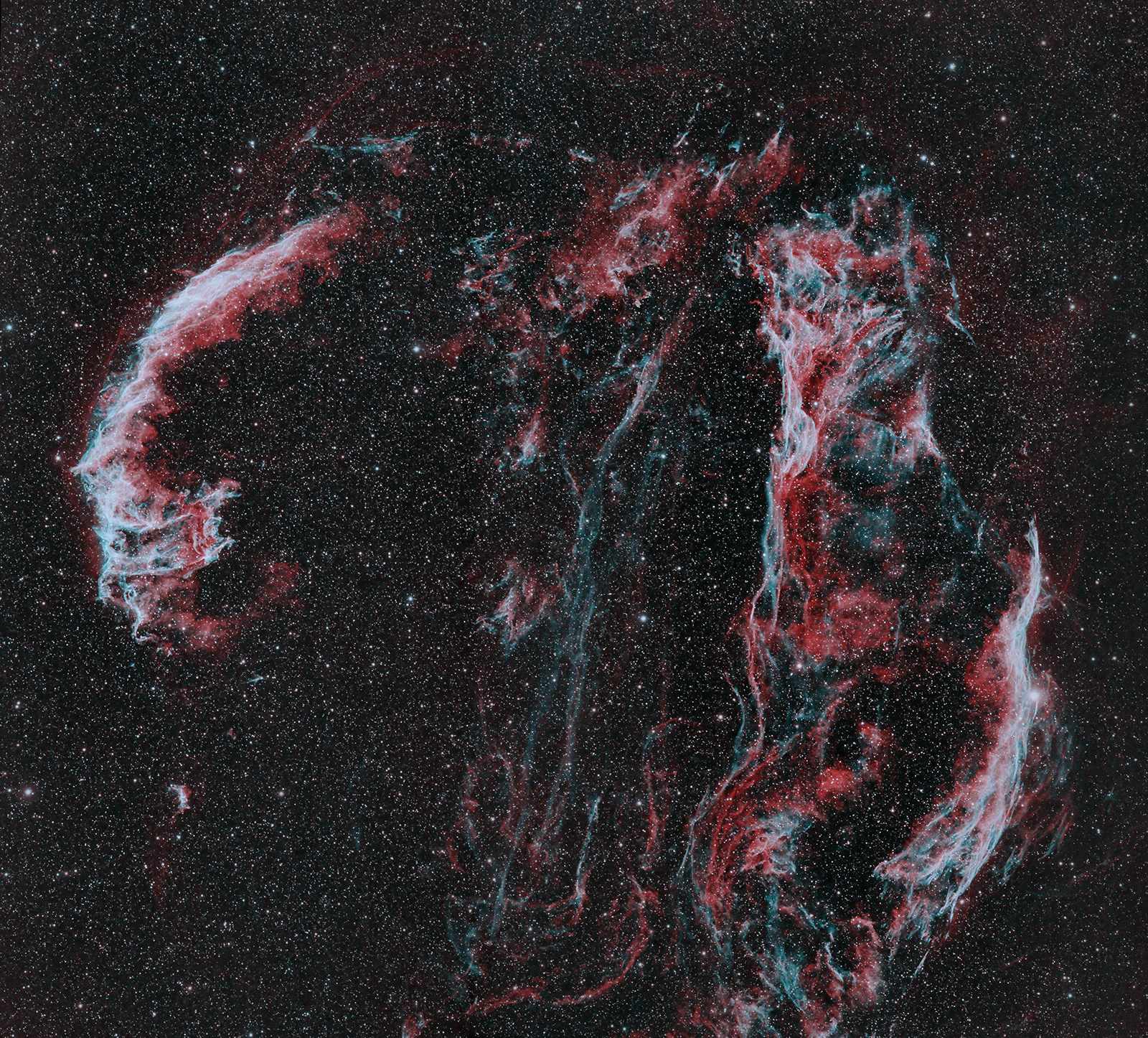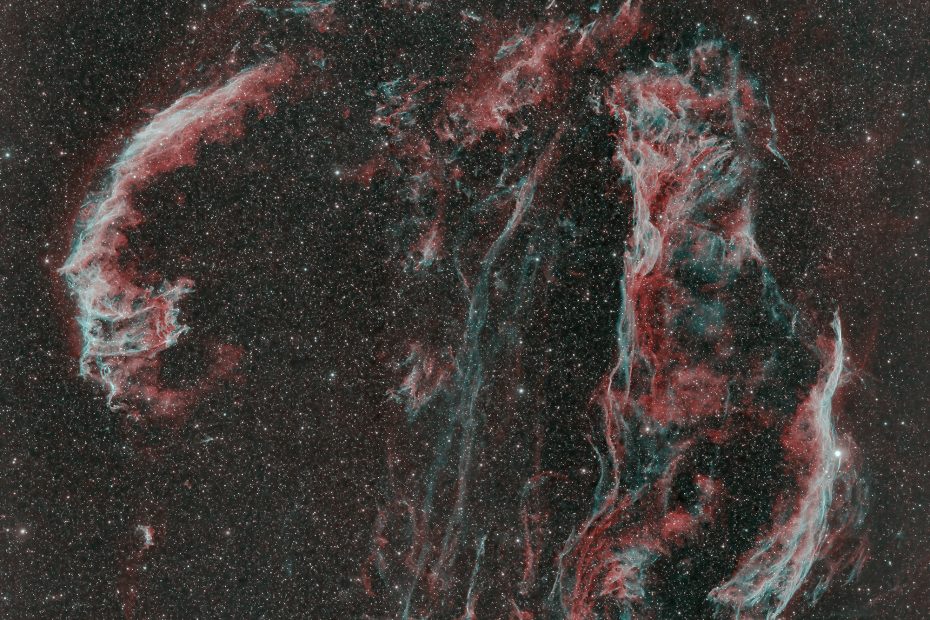The beautiful Veil Nebula in the constellation of Cygnus (the Swan) covers a large apparent area of the sky. When I say ‘large’ I mean it in a relative way. It covers a large enough area to make it hard for the average telescope to cover in one frame. To put this into perspective, the full Moon (or the Sun) is about half a degree across, but we need a field of view (FOV) of about 3 by 3 degrees to encompass the whole of the Veil Nebula. Thus, we can say that the full Moon would fit about 6 times across the apparent span of the Veil Nebula.
I have a lot of different telescopes and cameras! Some telescopes, such as the popular Schmidt Cassegrain design, are good for viewing the planets and small galaxies, but these typically have very small FOVs because they have long focal lengths to provide the high magnification which we need to see the belts on Jupiter, the craters on the Moon, or the rings of Saturn. Think of these telescopes as the telephoto lenses of the astronomer’s toolkit. Then there are the shorter focal length, smaller telescopes. These are the type (typically small refractors) that can give a wider view of the starry sky and they are ideal for delivering a larger FOV on to the camera’s sensor. However, only the smallest of these could cover the 3 by 3 degrees we require, and so I have resorted to the technique of imaging one half of the Veil Nebula on one night, followed by the other half on another night! I used an using an 85mm F/5.3 refractor. The two sets of images are ultimately processed and seamlessly joined together in a mosaic to show the Veil Nebula in one final image. Although this sounds complicated, there are advantages to this approach as the final image provides a much higher resolution of the target than could been obtained with a telescope that could fit the whole thing in in one go. The final image ends up with more pixels too.
The Veil Nebula is a Supernova remnant. The star that blew itself to pieces was 20 times more massive than the Sun and was just over 2,000 light years away. This cataclysmic event happened about 10,000 years ago. The remaining remnant structure is about 110 light years across and contains the beautiful glowing filaments that you can see in the image. The red colour is caused by ionised Hydrogen atoms, and the green from doubly ionised Oxygen atoms. The filter that I used to capture this image allows light of these two colours (wavelengths) to pass through, but cuts off everything else, including general light pollution and moonlight etc. Astronomers call this narrowband imaging.
Click on the image below to see a full-sized version.

